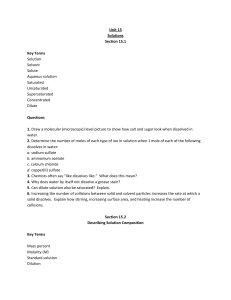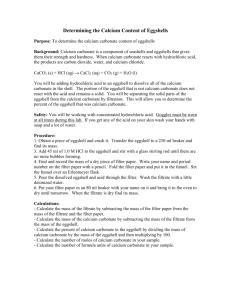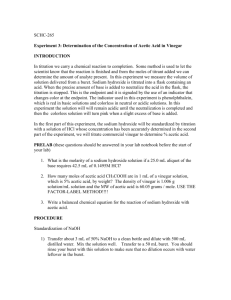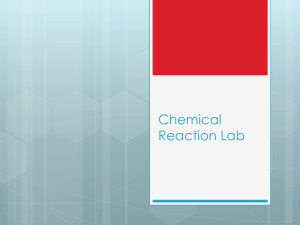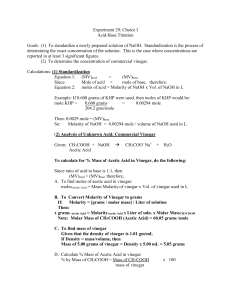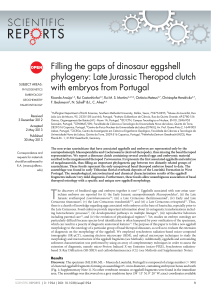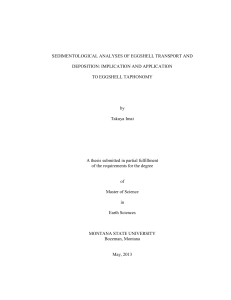Handout: Determining the Percentage of Acetic Acid in Vinegar
advertisement
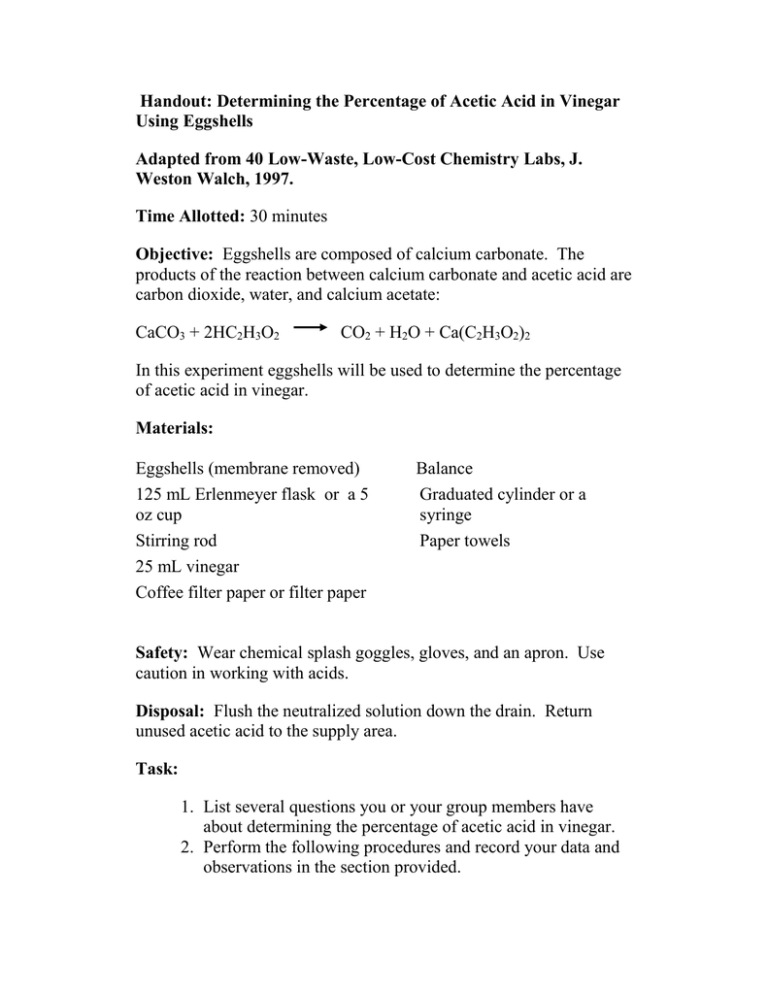
Handout: Determining the Percentage of Acetic Acid in Vinegar Using Eggshells Adapted from 40 Low-Waste, Low-Cost Chemistry Labs, J. Weston Walch, 1997. Time Allotted: 30 minutes Objective: Eggshells are composed of calcium carbonate. The products of the reaction between calcium carbonate and acetic acid are carbon dioxide, water, and calcium acetate: CaCO3 + 2HC2H3O2 CO2 + H2O + Ca(C2H3O2)2 In this experiment eggshells will be used to determine the percentage of acetic acid in vinegar. Materials: Eggshells (membrane removed) 125 mL Erlenmeyer flask or a 5 oz cup Stirring rod 25 mL vinegar Coffee filter paper or filter paper Balance Graduated cylinder or a syringe Paper towels Safety: Wear chemical splash goggles, gloves, and an apron. Use caution in working with acids. Disposal: Flush the neutralized solution down the drain. Return unused acetic acid to the supply area. Task: 1. List several questions you or your group members have about determining the percentage of acetic acid in vinegar. 2. Perform the following procedures and record your data and observations in the section provided. Procedures: 1. Using the graduated cylinder or a syringe, transfer 25 mL of vinegar to a cup. (1 cc = 1 mL) 2. Break the eggshell into small pieces (Do not grind). Determine the mass of an empty coffee filter paper or filter paper and determine the mass of the eggshell plus the filter paper to +/- 0.01 grams by taking the difference in weight. Record your results in the data table. Don’t discard the filter paper used here! 3. Add the eggshell to the vinegar. Use the stirring rod to ensure all the shell is below the surface of the vinegar. 4. Swirl the cup to speed up the reaction and then allow the reaction to proceed for several hours (4-6 hours) until the gas bubbles stop rising. 5. Filter the vinegar/eggshell mixture. To filter, take the coffee filter paper or filter paper used in step 1 and make a filter funnel by folding it in quarters. It should look like the diagram below. At the top of the cone, pull 3 layers of the filter paper to one side leaving one on the opposite side. Hold the filter over a cup and pour the eggshell/vinegar mixture into the filter. Allow gravity to help move the vinegar away from the eggshells. 6. Allow the eggshells collected in the filter paper to dry together with the filter during overnight. 7. On the following day determine the mass of the dry eggshell to +/- 0.01 grams as you did in step 1. Record in the data table. Data and Table: Mass of eggshell. Volume of vinegar. Mass of dried eggshell. Calculations (record results in the calculations table): 1. Determine the mass of eggshell reacted by subtracting the mass of the dry eggshell from the mass of the entire eggshell. 2. Assuming the eggshell is 100% calcium carbonate; determine the number of moles of calcium carbonate used in the reaction. 3. Using the balanced equation, determine the mole ratio of calcium carbonate to acetic acid. Determine the number of moles of acetic acid neutralized using the mole ratio. 4. Calculate the molar mass of acetic acid. Determine the number of grams of acetic acid present by multiplying the molar mass by the number of moles of acid. 5. Determine the percentage (by mass) of acetic acid in the vinegar sample using the volume of the sample and the mass of acetic acid. 6. Were any of the questions you or your group had answered by this activity? If so, which ones? Calculations Table: Mass of eggshell reacted. Moles of CaCO3 reacted. Mole ratio (CaCO3 : HC2H3O2). Moles of Acetic acid. Grams of Acetic acid in sample. Experimental percentage. Accepted percentage. Percentage error.
